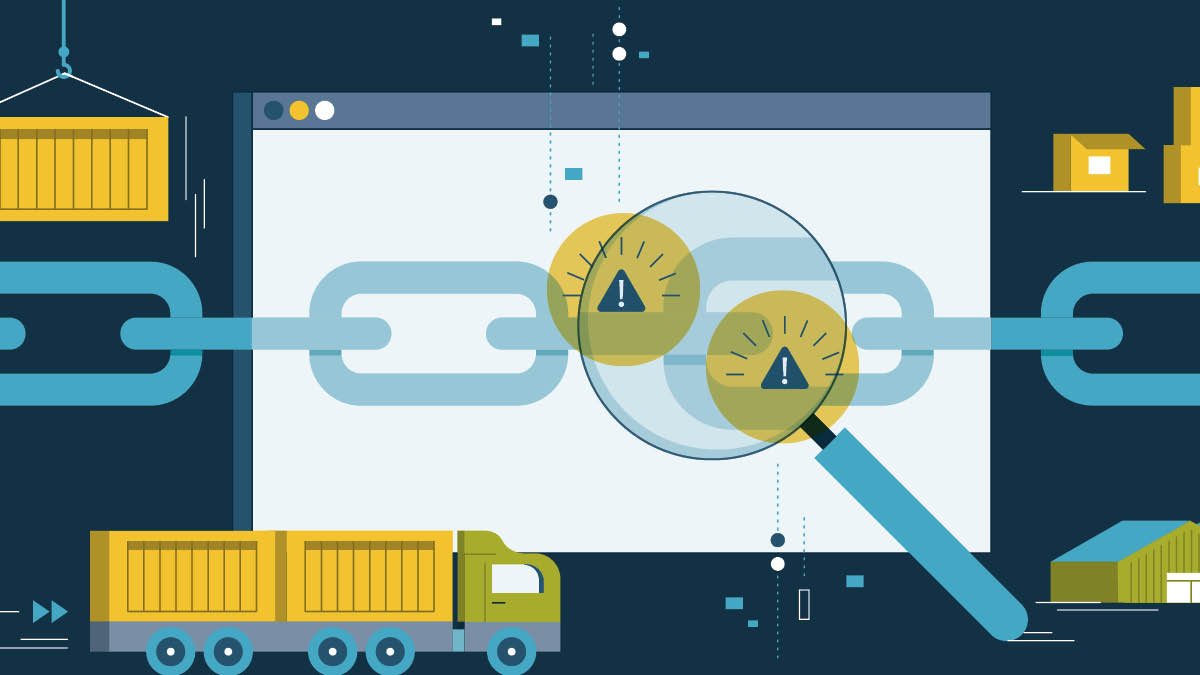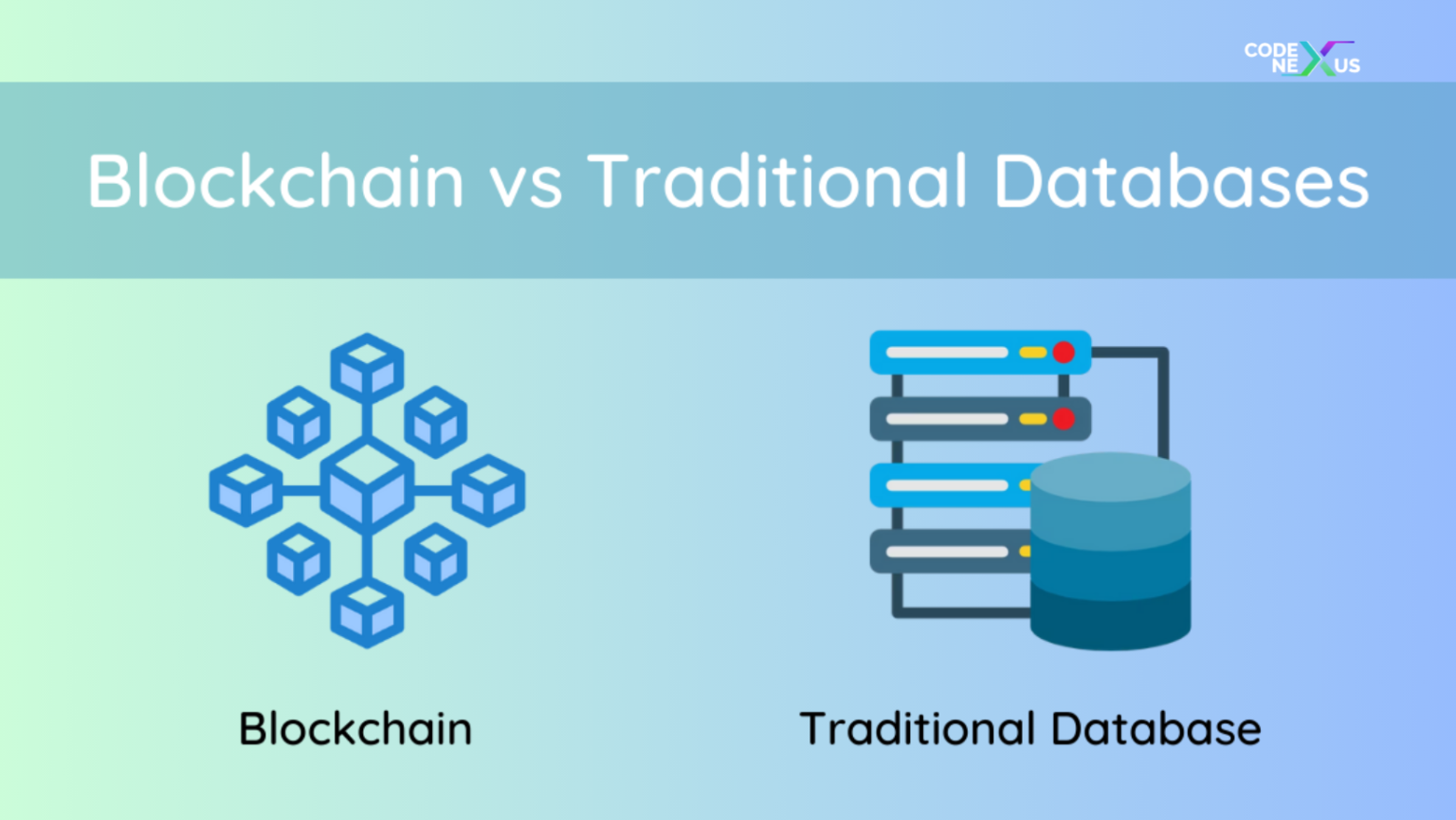In today’s digital world, data plays a pivotal role in driving decisions, running businesses, and managing daily operations. Behind the scenes of most applications and online platforms lies a database—a system that stores, organizes, and retrieves data. For decades, traditional databases have been the backbone of many industries, from banking to retail. However, with the advent of blockchain technology therefore a new contender for managing data has emerged. Blockchain promises a decentralized, transparent, and secure approach to data management. In this blog let’s learn Blockchain vs Traditional Databases.
We will explore how blockchain compares to traditional databases. We’ll dive into the key differences, the unique advantages of each system, and how blockchain is increasingly being used in industries like supply chain management. Let’s start with the basics.
What is a Traditional Database?
A traditional database is a structured collection of data that is stored and managed by using a database management system (DBMS). These databases are typically centralized, meaning that one entity—such as a company or an organization—controls them. In a traditional setup, data can be created, read, updated, or deleted (commonly known as CRUD operations). This ability to modify data is what makes traditional databases so flexible for a wide range of use cases.
Centralized Structure
Traditional databases operate under a centralized model. This means a single authority—be it a company or an institution—controls the database. Users can access data, but they do so with permissions granted by the central entity.
For example, banks use traditional databases to store and manage customer accounts, transactions, and records. In this scenario, the bank has full control over the database, ensuring that only authorized personnel can make changes to sensitive data.
Data Storage and Retrieval
One of the key features of traditional databases is their ability to be modified. Data stored in traditional databases can be updated or deleted as needed. If there’s an error in an entry or a change in information, an administrator can alter the data without issues. This flexibility allows organizations to maintain up-to-date and accurate records.
This ability to modify data also opens the door for potential risks, such as data tampering or unauthorized changes. To mitigate these risks, traditional databases often rely on security features like user permissions, firewalls, and encryption.
Use Cases
Traditional databases are widely used across various industries:
- Banking: Storing customer information, managing accounts, processing transactions.
- Retail: Managing inventory, tracking sales, customer orders, and product details.
- Healthcare: Storing patient records, medication lists, and treatment histories.
These databases are often chosen for their speed, scalability, and ease of use in settings where data needs to be frequently accessed and updated
What is Blockchain?
Blockchain, on the other hand, represents a completely different approach to data management. Instead of relying on a single, central authority, blockchain operates as a decentralized network. This means that data is distributed across multiple nodes (computers) that participate in the network. Unlike traditional databases, data stored on a blockchain is immutable—it cannot be altered once it has been recorded.
Decentralized Structure
The defining feature of blockchain is its decentralized nature. Rather than relying on one entity to control and maintain the database, blockchain operates as a peer-to-peer network. Each participant in the network (referred to as a node) holds a copy of the entire blockchain.
For example, in the case of Bitcoin, every participant in the network holds a copy of the transaction ledger. When a new transaction occurs, it is verified by multiple nodes and added to the blockchain as a new “block.” Once added, this block is permanent and cannot be changed.
Immutable Ledger
One of the most unique aspects of blockchain is that it creates an immutable, or unchangeable, record of transactions. Each block in the blockchain contains a list of transactions, a timestamp, and a reference (or hash) to the previous block. This creates a chain of blocks, hence the name blockchain.
If someone attempts to alter a block in the chain, the cryptographic hash of that block will change, which will invalidate all subsequent blocks. This makes it nearly impossible to tamper with data on the blockchain without altering the entire chain across all nodes.
Use Cases
Blockchain technology is being used in various industries, with some of the most common applications being:
- Cryptocurrencies: Bitcoin, Ethereum, and other digital currencies rely on blockchain to record and verify transactions.
- Supply Chain Management: Companies are using blockchain to track goods as they move through the supply chain, ensuring authenticity and transparency.
- Smart Contracts: These are self-executing contracts with the terms of the agreement written into the code. They automatically execute when conditions are met, in fact reducing the need for intermediaries.
Key Differences Between Blockchain and Traditional Databases
Now that we understand the basics of both systems, let’s dive into the key differences between blockchain and traditional databases.
1. Centralization vs Decentralization
Traditional databases are centralized, meaning they are controlled by a single entity. In contrast, blockchain is decentralized, with control spread across multiple nodes in a peer-to-peer network. This decentralization allows blockchain to operate without a central authority, reducing the risk of a single point of failure.
2. Data Modification
In traditional databases, data can be modified or deleted as needed, in fact offering flexibility but also posing a risk for data tampering. Blockchain, however, offers immutability—once data is recorded, it cannot be altered. This makes blockchain ideal for applications where data integrity is critical, such as financial transactions or legal records.
3. Trust and Transparency
With traditional databases, users must trust the central authority to manage and maintain data securely. This requires strict access controls and monitoring. Blockchain, on the other hand, provides transparency by allowing all participants in the network to view the same data. Since transactions are recorded across all nodes, no single party can alter the data without the network’s consensus.
4. Security
Both systems offer security, but in different ways. Traditional databases rely on firewalls, user authentication, and encryption to secure data. Blockchain’s security is built-in through cryptography and consensus mechanisms like Proof of Work (PoW) or Proof of Stake (PoS). These mechanisms make it extremely difficult for bad actors to alter the blockchain without overwhelming the network.
5. Performance and Scalability
Traditional databases are highly efficient and can handle large volumes of transactions quickly. This makes them well-suited for applications that require real-time processing. Such as e-commerce or banking. Blockchain, while secure, can be slower due to the time it takes to verify and add new blocks to the chain. However, newer blockchains are focusing on improving scalability and transaction speeds.
6. Cost Efficiency
Traditional databases are generally cost-effective for most applications, especially when centralized control is needed. Blockchain, though it can be expensive to implement initially, offers long-term cost benefits by eliminating intermediaries and reducing administrative overhead. For example, smart contracts can automate processes that would otherwise require manual intervention.
Transparency and Security Benefits of Blockchain
When we talk about blockchain, obviously two of the most significant benefits that stand out are transparency and security. These characteristics make blockchain an appealing option for industries that require a high level of trust and integrity in their data.
Transparency
One of the most important features of blockchain is its transparency. Every transaction that takes place on the blockchain is visible to all participants. This means that there is no room for hidden manipulations or unauthorized changes. For industries like finance and supply chain management, this level of transparency is invaluable. It ensures that all stakeholders have access to the same information, which fosters trust and accountability.
Security
Blockchain’s security is a result of its cryptographic foundations. Every block in the chain is linked to the previous block using a cryptographic hash. If someone tries to alter the data in one block, it will affect the entire chain, making the attack immediately obvious to all participants in the network. This cryptographic security, combined with consensus mechanisms like PoW or PoS, makes blockchain highly resistant to attacks.
Blockchain is decentralized, there is no single point of failure. In traditional systems, if the central database is compromised, the entire system can be brought down. Blockchain’s distributed nature ensures that even if one node is attacked, the network as a whole remains secure.
Emerging Trend: Blockchain in Supply Chain Transparency
One area where blockchain is making a significant impact is supply chain management. Traditional supply chains are often opaque, with multiple intermediaries involved. This can lead to inefficiencies, delays, and even fraud. Blockchain provides a solution to these problems by offering real-time tracking and transparency from the point of origin to the final destination.
Current Challenges in Supply Chains
Supply chains are complex and often involve multiple players—manufacturers, suppliers, shippers, retailers, and consumers. Traditional supply chain systems rely on paper-based processes, which can be slow, error-prone, and difficult to track. This lack of transparency often leads to issues like counterfeiting, product recalls, and inefficient logistics.
Blockchain’s Role
Blockchain solves these challenges by providing a transparent ledger where all participants can track goods as they move through the supply chain. Every step of the journey is recorded on the blockchain. Ensures that all parties can verify the authenticity and status of the products.
For example, Walmart is using blockchain to track the movement of food products from farm to table. This allows them to quickly identify the source of any contamination and remove affected products from shelves. Similarly, IBM Food Trust is working with multiple retailers to ensure that food products are tracked accurately, reducing the risk of fraud and ensuring product quality.
Conclusion
In conclusion, both blockchain vs traditional databases have their unique strengths and weaknesses. Traditional databases offer flexibility, scalability, and speed, making them ideal for many applications where data needs to be frequently updated. However, blockchain’s decentralized, immutable, and transparent nature offers new possibilities for industries that is require high levels of trust, security, and accountability.
In Brief as blockchain technology continues to evolve, it is becoming increasingly clear that it has the potential to revolutionize sectors beyond finance. From supply chain transparency to smart contracts and beyond, blockchain offers a future where data is not only secure but also open and verifiable by all. The choice between traditional databases and blockchain ultimately depends on the specific needs of the business or application. However, with its growing adoption in various industries. However blockchain is proving to be a game-changer in the world of data management.







